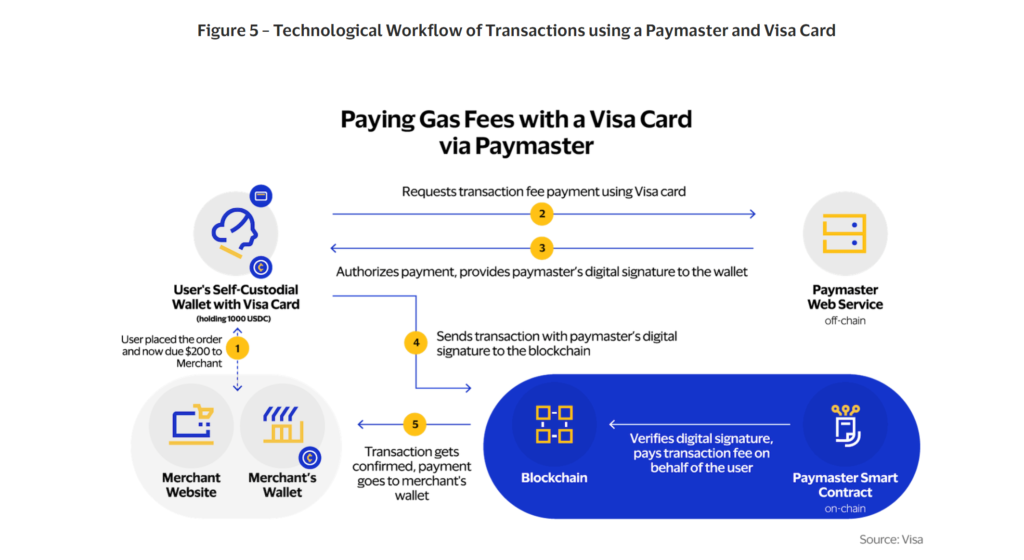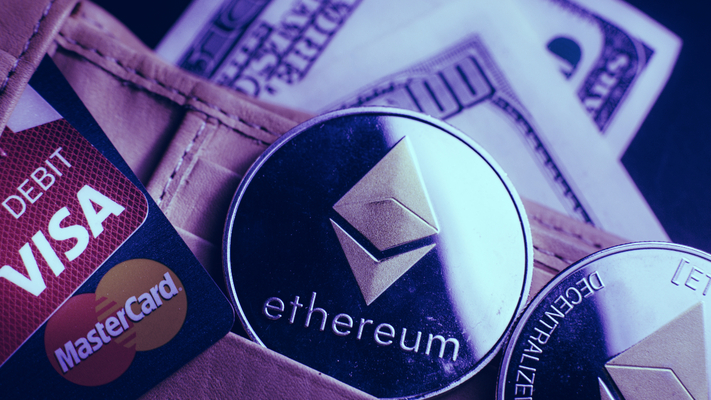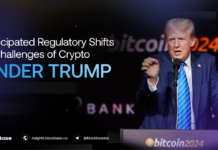Last week, the global payment giant Visa introduced an experiment on Ethereum that allowed users to pay gas fees in fiat through their credit card or debit card. This experiment used a Paymaster contract to settle gas fees for customers and was conducted on Ethereum Goerli.
Visa’s payment experiment on Ethereum takes advantage of account abstraction technology and the ERC-4337 standard to enhance the user experience by “eliminating the gas fee barrier”. In terms of technicality, users still have to pay a gas fee, but this approach allows them to utilize various tokens like USDT or USDC, even credit cards to cover gas fees. This eliminates the need for users to hold native tokens solely for transaction execution.

Managing ETH for settling gas fees can pose challenges for certain users, especially newcomers who are not well-versed in the workings of DeFi. For example, those who want to mint NFTs on Ethereum might encounter specific hurdles:
- First, they must compute the required amount of ETH to cover both the gas fee and NFT minting costs, then use an on-ramp service to convert their fiat into ETH. Alternatively, they can purchase ETH on exchanges like Binance or Coinbase…
- Next, they need to transfer ETH to their Ethereum wallet. This step demands careful attention, as sending funds to the wrong address could result in the loss of assets. Transactions on the blockchain are irreversible.
- Furthermore, the volatility in ETH’s price prompts users to acquire more ETH than initially calculated. If they don’t allocate sufficient ETH for gas fees, transactions can fail, leading to the loss of the designated gas funds.
This process creates a barrier to entry into the blockchain because it appears to be complex, resembling the cumbersome and user-unfriendly approach of converting cash into various currencies when traveling across different countries.

To resolve it, Visa proposed a solution with the Paymaster contract as the center. Paymaster acts as an intermediary who can sponsor gas fees for users’ transactions by accepting the user’s gas fee payment off-chain from a Visa card and covering the equivalent amount on-chain. By doing so, Paymaster helps take care of the complex processes behind the scenes, enabling users to effortlessly select their Visa card to cover gas fees. This proposal brings simplicity and a better experience to those who are looking for a more streamlined and accessible way to engage with blockchain transactions. Users simply need to execute the transaction and supply the necessary funds for the transaction; Visa will take care of the most complicated aspects.
Furthermore, this experiment demonstrated that developers can implement their own payment management system for their projects, improving user experience by enabling payments through Visa cards or other tokens. The implementation of this potential solution paves the way for a more user-friendly and accessible approach to digital transactions.
The intricacies and complexities associated with blockchain transactions have proven to be substantial obstacles for numerous users. Nonetheless, Visa’s payment experiment on Ethereum presented a promising solution that could significantly mitigate these challenges. Through the utilization of a paymaster, coupled with the concepts of Account Abstraction and the ERC-4337 standard, they can forge a future where the blockchain ecosystem is more closely with the real world.





